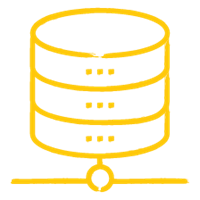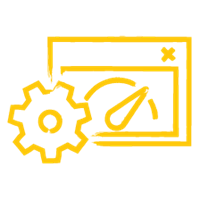
Transform Workflows with Intelligent Document Processing
What is intelligent document processing? This exciting technology powered by artificial intelligence opens the door to automating content-intensive workflows.
Overview
Intelligent document processing is one of the most powerful tools available today for managing and classifying unstructured data at an intersection of today's AI and automation tools. From initial capture to OCR, NLP, data classification and separation, and eventually integration into other processes, IDP has untold transformative power for your document workflows. Explore why intelligent document processing is important for the modern business and discover what it can do for offices at any scale today.

What is Intelligent Document Automation?
What is the Difference Between OCR and IDP?

OCR Only Relates to Capturing Data
Optical character recognition or OCR focuses on recognizing the characters on a page and extracting that information into a useful format. OCR is an essential element of IDP, but it is only one part of the extraction process.

OCR Can Struggle with Unstructured Data
Rules-based RPA tools that rely on OCR can face difficulties when document formats change or when handwriting is unclear or ambiguous. Intelligent processing uses deep learning on substantial data sets to “know” how to handle these variations, producing cleaner data with fewer errors. Improved data quality through IDP contributes directly to better outcomes for the humans working with outputs from these systems.

IDP Involves Automated Decision-Making
Based on its training data and the directives provided by human developers, IDP can move, transform, and make decisions based on the documents it analyzes. OCR cannot.

IDP Interconnects with Other Systems
OCR is a method for outputting digitized data, but IDP lets users define workflows involving complex steps and data transformations based on the document’s contents. Rapid data classification and subsequent separation into different applications enable better, faster results in many processes and improve customer experiences.
The Core Benefits to Businesses
Improve Processes from End to End
Streamline document intake from all paper and digital channels and improve the speed of digitization, classification, and actioning. Remove tedious steps from document workflows and take steps towards a more paperless office environment.
Enhance Data Privacy and Simplify Compliance
Define strict compliance rules that AI-powered processes will always follow. Automatically detect when a document has sensitive data and apply security settings touchless in a controlled environment with a verifiable audit trail.
Reduce Reliance on Error-Prone Manual Work
Reduce human manual processes and rededicate skilled labor to more high-value tasks supported by accurate data. Enjoy repeatably high accuracy and lower error rates with document processes that learn and improve.
Generate Clear Daily Savings
Positively impact the bottom line by saving time, reducing the need for re-processing paperwork, and ensuring that the right teams and systems have the information.
Speed Up Your Document Processing Times
Drastically reduce the amount of time a document takes to land on the appropriate desk or to receive approval necessary for another process step.
Solve Complex Problems in Unstructured Data
Approach problems traditionally considered unsolvable with manual processes and discover hidden inefficiencies. Don’t underestimate the impact of better data extraction on processes that rely on relevant, accurate information.
What Industries Benefit from IDP?
Finding the Right Tools for Effective IDP
What is Intelligent Process Automation?
The intersection between traditional automation tools and advanced machine learning applications is IPA or intelligent process automation. Kofax TotalAgility enables IPA to realize savings, work faster, and solve bigger problems.
TotalAgility Delivers Innovative Process Tools
Cloud-enabled, capable of connecting to a vast array of business systems, and featuring built-in RPA and analytical tools, TotalAgility is the complete package. Engineer entirely new workflows and build your competitive edge.
Industry-Leading Accuracy in OCR and IDP
Achieve clear gains with virtually unmatched accuracy and reliability in the platform’s character recognition and language processing capabilities. These attributes make TotalAgility a clear favorite when others ask, “who are the top intelligent document processing vendors?”
Scale with Ease to Tackle Any Task
Today’s automation demands might not be tomorrow’s. Prepare for the process of scaling by choosing tools that have the built-in power and capabilities to handle large volumes of documents.







